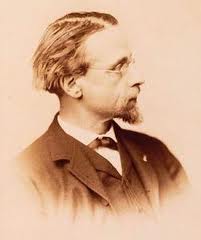
Pierné recognised the revolutionary musical innovations in the piece, and arranged for the first part performance of the ‘Tableaux’, called ‘Thebes’, which was highly praised by the musical press. Later, numerous works by Fanelli were performed by Pierné.
Unfortunately, Fanelli had already quit composing in 1894, and couldn’t take advantage of his new-found fame. He was either unable or unwilling to resume composing, but still worked as a performer in order to provide for his wife and children. Fanelli passed away some years later.
His composition predated the original works of Claude Debussy and Maurice Ravel, which led to speculations that either one or both had viewed the manuscript.
Following his death, Fanelli’s widow presumably claimed that Ravel, Debussy and Erik Satie had come to Fanelli’s house and examined his unpublished scores prior to making their own compositions. This supposed statement was published by George Antheil, who says that he was told about Fanelli’s innovations by Constantine von Sternberg. He continues, saying that he went to see Fanelli’s widow, and was given permission to examine Fanelli’s scores.
Fanelli’s most famous work, ‘Tableaux Symphoniques d'apres le Roman de la Momie’, was a symphonic poem written in a series of ‘tableaux’, depicting the novel ‘The Romance of the Mummy’ by Théophile Gautier. ‘Thebes’, the first part, is meant to symbolise the capital city of Egypt. The second part, titled ‘Fete dans le palais du Pharaon’, which depicts royal festivities, never got published, though it was also performed in 1913.
Unfortunately, Fanelli had already quit composing in 1894, and couldn’t take advantage of his new-found fame. He was either unable or unwilling to resume composing, but still worked as a performer in order to provide for his wife and children. Fanelli passed away some years later.
His composition predated the original works of Claude Debussy and Maurice Ravel, which led to speculations that either one or both had viewed the manuscript.
Following his death, Fanelli’s widow presumably claimed that Ravel, Debussy and Erik Satie had come to Fanelli’s house and examined his unpublished scores prior to making their own compositions. This supposed statement was published by George Antheil, who says that he was told about Fanelli’s innovations by Constantine von Sternberg. He continues, saying that he went to see Fanelli’s widow, and was given permission to examine Fanelli’s scores.
Fanelli’s most famous work, ‘Tableaux Symphoniques d'apres le Roman de la Momie’, was a symphonic poem written in a series of ‘tableaux’, depicting the novel ‘The Romance of the Mummy’ by Théophile Gautier. ‘Thebes’, the first part, is meant to symbolise the capital city of Egypt. The second part, titled ‘Fete dans le palais du Pharaon’, which depicts royal festivities, never got published, though it was also performed in 1913.
 RSS Feed
RSS Feed